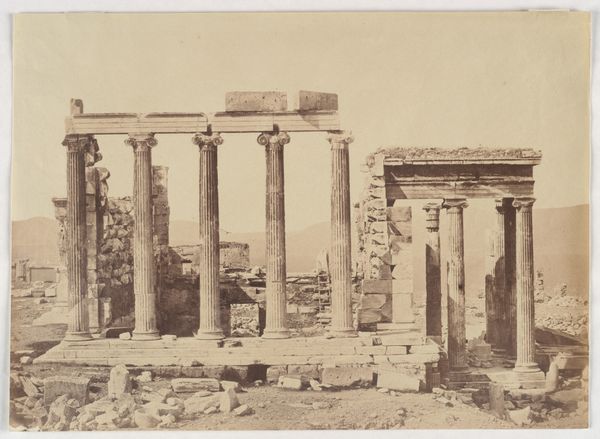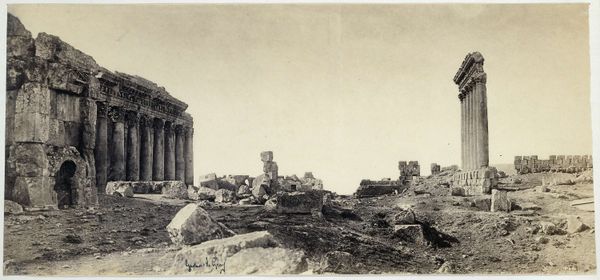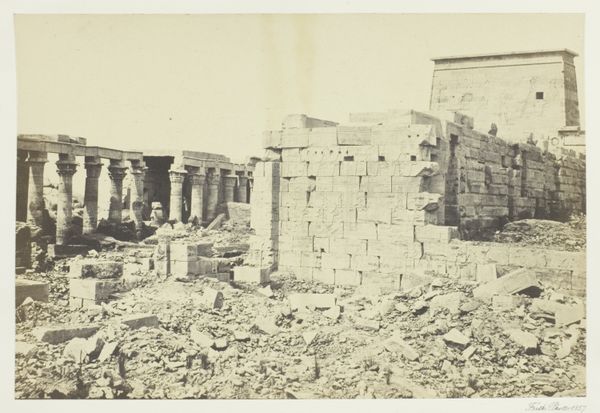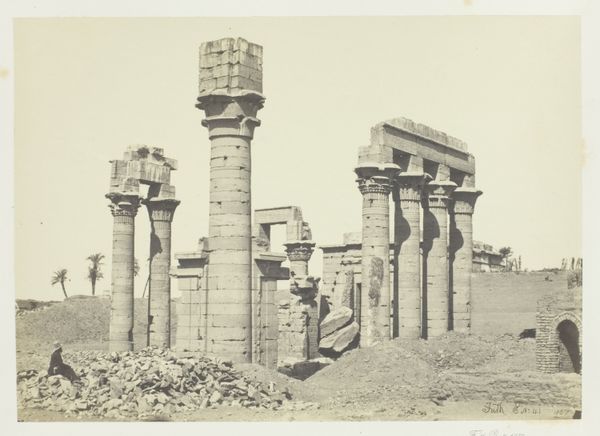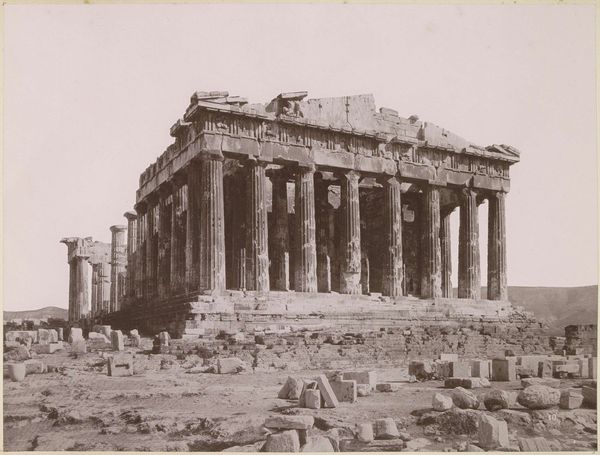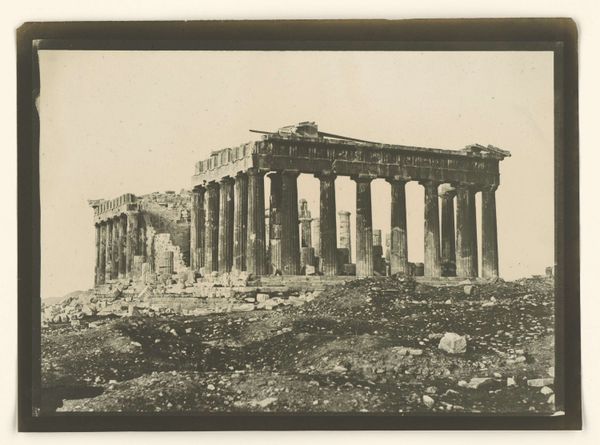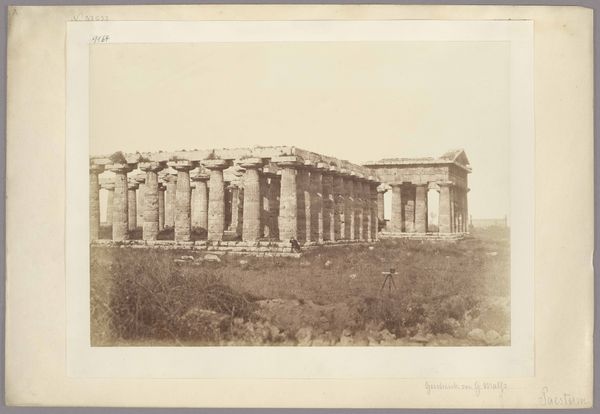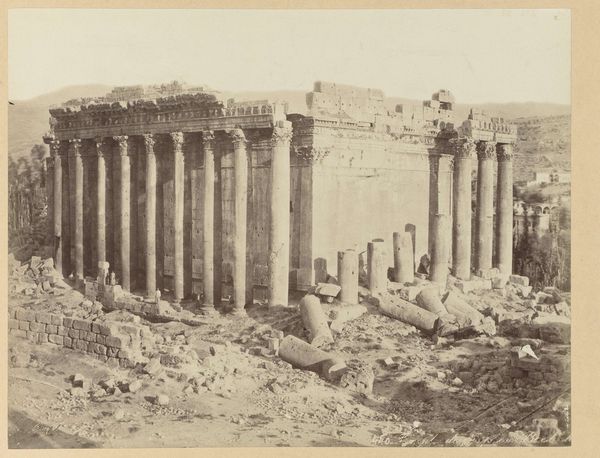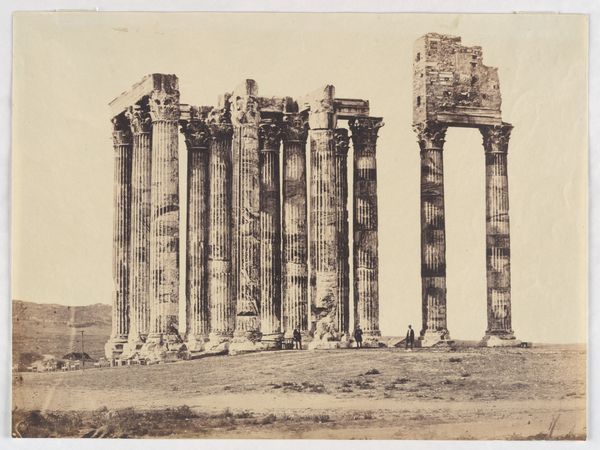
print, photography, gelatin-silver-print, architecture
# print
#
landscape
#
classical-realism
#
photography
#
gelatin-silver-print
#
islamic-art
#
history-painting
#
architecture
Dimensions: height 80 mm, width 103 mm
Copyright: Rijks Museum: Open Domain
Johannes Lodewijk Heldring made this photograph of the Temple of Bacchus in Baalbek, Lebanon, sometime between the late 19th and early 20th century. It reflects a Western fascination with the classical world, filtered through the lens of colonial exploration and documentation. Consider the act of photographing ancient ruins: what does it mean to capture and classify a culture through its material remains? The Temple, dedicated to the Roman god of wine and festivity, becomes a site not just of archaeological interest but of cultural encounter. The sepia tone and the composition of the photograph, with its focus on the monumental architecture, evoke a sense of romanticism and historical grandeur, yet they also speak to the power dynamics inherent in the gaze of the Western observer. We can use travelogues, historical surveys, and studies of colonial photography to understand the complex interplay of power, knowledge, and representation that this image embodies. It is a reminder that our understanding of art is always mediated by the social and institutional contexts in which it is produced and received.
Comments
No comments
Be the first to comment and join the conversation on the ultimate creative platform.


